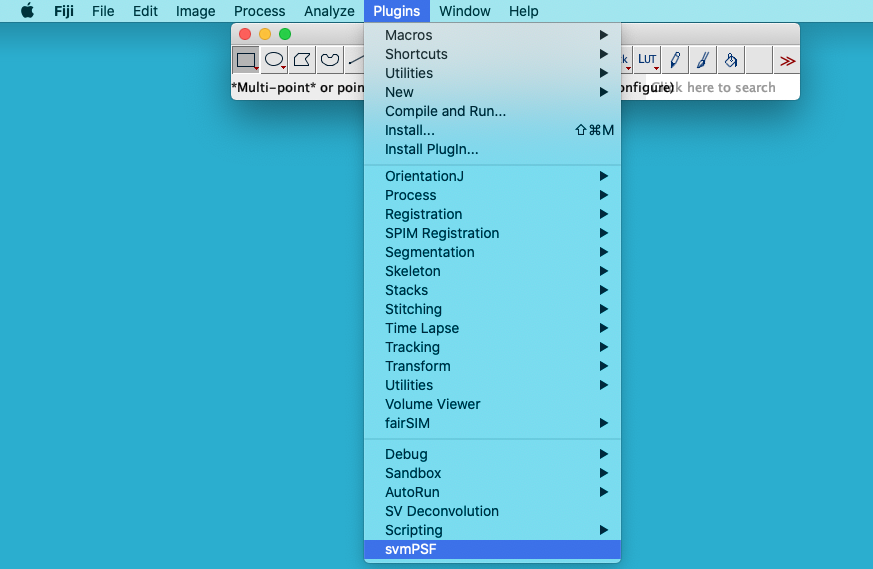svmPSF quickstart manual
For citeable PDF versions of this document, please use the links below.
- DOI (concept): https://doi.org/10.5281/zenodo.3901390
- DOI (version): https://doi.org/10.5281/zenodo.3966990
- Authors: Raphaël Turcotte, Carla C. Schmidt, Nigel J. Emptage, Martin J. Booth
- Last modified: 5 yrs ago
The listed authors have participated in the writing of this document. As the content is the culmination of long term work in the Dynamic Optics and Photonics Group, many others have contributed directly or indirectly to this material. We consciously acknowledge all of these contributions, even though it is impractical to list them all here
Description
This user manual explains how to install and use the svmPSF plugins for Fiji/ImageJ. The svmPSF plugin models a spatially variant PSF into a series of spatially invariant PSFs. Details information about the svmPSF plugin and the algorithm it employs can be found in the associated publication. Combined with a modified Richardson-lucy deconvolution alogorithm, the outputs from svmPSF enable deconvolution of images acquired with a multimode-optical fibre imaging system (link to deconvolution code).
If you use svmPSF for your research or education, please cite our associated publication:
Turcotte R, Sutu E, Schmidt CC, Emptage NJ, Booth MJ.
Deconvolution for multimode fiber imaging: Open-source modeling of spatially variant PSF.
Biomedical Optics Express 2020;11(8):4759-4771. DOI: 10.1364/BOE.399983Installation
To install the svmPSF plugin for Fiji/ImageJ follow these step:
1) Click on the following link to access the svmPSF plugin: https://github.com/dop-oxford/svmPSF.
2) Download the svmPSF plugin file onto your computer (svmPSF_1.0.0.jar).
3) Close any instance of Fiji/ImageJ.
4) Open the Fiji/ImageJ’s plugin folder on your computer. Note: On MacOSX, use "Show Package Contents" to see the plugin folder.
5) Move the svmPSF plugin file into the Fiji/ImageJ’s plugin folder.
6) Open Fiji/ImageJ. The svmPSF plugin should be listed under plugins (Fig. 1).

Operation
The operation of svmPSF can be tested with the provided datasets by following these steps:
1) Download and uncompress a test dataset.
2) Open Fiji/ImageJ.
3) Click on Plugins, then svmPSF (Fig. 1).
4) Select the number of modes (N). √N corresponds to the height and width of the PSF area. Use √N=15 with the test dataset.
5) Select the input folder within the dataset folder, which should include the point response measurements, and the output folder.
6) Select the position file. Note: It should be located in the input folder.
7) Click Run.
Note: Running the svmPSF plugin will take approx. 30 seconds. The Run button stays blue as long as the plugin is running.
8) Close the svmPSF plugin. The processed data is in the predefined output folder.


